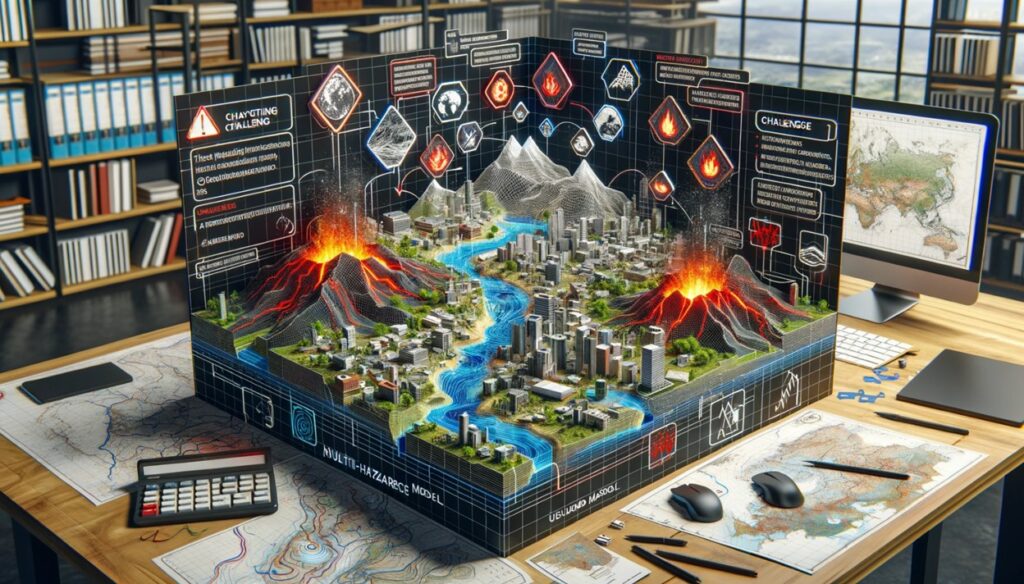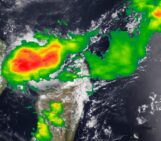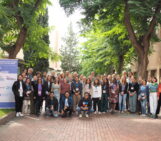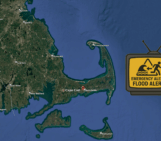
Understanding multi-hazard approaches is crucial in an era of escalating natural hazards leading to disastrous impacts on Earth’s citizens. Triggered by the increasing frequency and severity of these events, this brief post provides a concise yet comprehensive overview of evolving paradigms in multi-hazard research and management. By exploring definitions, historical developments, and current trends, we highlight the critical importance of integrated strategies in mitigating impacts on society all in a nutshell.
Foundation: Multi-hazard concept history at one glance
It is important to acknowledge that the encouragement of multi-hazard approaches began with the work of Hewitt and Burton (1971) [1]; they emphasised the necessity of systematic cross-hazard approaches in understanding the hazard landscape of an area. However, the importance of multi-hazards was pronounced when this concept was first introduced in the United Nations’ Agenda 21 for Sustainable Development, held in Rio de Janeiro, Brazil, in 1992 under the title of “complete multi-hazard research” [2]. Subsequent international frameworks, including the Johannesburg Plan (UN, 2002), the Hyogo Framework for Action (2005) [3], and the more recent Sendai Framework for Disaster Risk Reduction (2015-2030) [4], have further underscored the importance of these strategies. The Sendai Framework, for instance, highlights the necessity for multi-hazard approaches, defining them as “the selection of multiple major hazards faced by a country, including the specific contexts in which hazardous events may occur simultaneously, cascadingly, or cumulatively over time, with consideration for their potential interrelated effects” [2].
Since then, the field has seen an exponential increase in research across various dimensions of multi-hazards, ranging from social to physical aspects [for example, 5-6]. This trend has persisted, reaching a point where the term “multi-hazard” has become a common buzzword in nearly every project related to natural hazards [7].
The unfolding story: Initial and ongoing confusion
Initially, due to the unclear and varied definition of multi-hazards, studies mainly adopted approaches based on their own perceptions of this term, ranging from an “all-hazards-at-a-place approach” [1] to “more-than-one-hazard” approaches [8]. Kappes (2012) [8] provided an early definition of “multi-hazard” within the framework of risk reduction as “the totality of relevant hazards in a defined area”. This concept aimed to cover all potential environmental or man-made threats that could lead to harm, damage, or degradation. However, the criteria for defining the relevance of a hazard have been subject to debate, ranging from the introduction of a damage-based cut-off point for relevance by Hewitt and Burton (1971) [1], to the European Commission (2011) [9] proposing criteria based on the scale and impact of a hazard [8].
The traditional approach treats each hazard individually as a single event, often confusing decision-makers, particularly in critical circumstances. Managing natural hazards in isolation fails to recognise the interconnection and potential cascading effects that can arise from multiple hazards [8, 10-11]. Gill and Malamud (2016) [11] argue that narrowing the focus to a limited portion of the entire Earth system instead of understanding its dynamic interactions as a whole could lead to decisions that increase vulnerability to overlooked hazards. Consequently, the prevalence of single-hazard approaches inevitably leads to a distortion of management priorities.

(Image created by OpenAI, DALL.E (2024))
Modelling perspective: Challenges in multi-hazard mapping
Subsequently, multi-hazard mapping could not evidently remain safe from this ambiguity. Multi-hazard/ susceptibility maps are used to communicate complex scientific data with stakeholders. These maps serve as a communication tool to support and aid decision-makers by providing valuable information regarding disaster preparedness mitigation measures and informing urban planning and public policy [12]. To avoid single-hazard approaches, many analyses turned to superimposing separately modelled single hazards in a given area, which they are better called a multi-layer single-hazard approach [11], which is similar to the all-hazards-at-a-place approach, causing the same challenges in practice. In this regard, a full multi-hazard assessment/mapping has been encouraged, where the interrelationships of hazards (triggering, amplifying, compound and consecutive events) are also considered.
The final thought: A question mark
Moving beyond only assessing individual hazards is essential to manage natural hazards better. Equally important is gaining insights into the complex interplay between various hazards and their cascading relationships and effects. Since natural hazards do not occur in isolation but often exacerbate each other, leading to compounded effects, the strategies for understanding and mitigating them must also be collaborative, drawing from a wide range of scientific disciplines. When different hazards join forces to unleash significant damage, why should not scientists from various fields do the same? Just as these hazards compound their impact by working in tandem, our response should be equally collaborative, bringing together diverse expertise to tackle the challenge head-on. The fundamental step towards this collaboration is facilitating effective communication by establishing a common language where all different terms, yet conveying more or less the same concept, can be understood when discussing multi-hazards and their impacts on society.
References
[1] Hewitt K, Burton I (1971) Hazardousness of a place: a regional ecology of damaging events. Toronto Press, Toronto
[2] UNEP (1992) Agenda 21. Tech. rep., United Nations Environment Programme
[3] UNISDR, 2005. Hyogo Framework for Action 2005-2015: Building the Resilience of Nations and Communities to Disasters. United Nations, Hyogo, Japan
[4] UNISDR. Sendai Framework for Disaster Risk Reduction 2015–2030. In UN Report UNISDR/GE/015; United Nations Office for Disaster Risk Reduction: Geneva, Switzerland
[5] Joffe, H., Potts, H. W., Rossetto, T., Doğulu, C., Gul, E., & Perez-Fuentes, G. (2019). The Fix-it face-to-face intervention increases multihazard household preparedness cross-culturally. Nature human behaviour, 3(5), 453-461
[6] Tilloy, A., Malamud, B.D., Winter, H., Joly-Laugel, A., 2019. A review of quantification methodologies for multi-hazard interrelationships, 102881–102881 Earth-sci. Rev. 196
[7] Al-Khalili, J. host. (2023, June 6). Bruce Malamud on modelling risk for natural hazards. The life scientific BBC, Radio4
[8] Kappes, M.S., Keiler, M., von Elverfeldt, K. et al., (2012). Challenges of analyzing multi-hazard risk: a review. Nat Hazards 64, 1925–1958
[9] European Commission (2011). Risk assessment and mapping guidelines for disaster management. Commission staff working paper, European Union
[10] Gill, J. C., & Malamud, B. D. (2014). Reviewing and visualizing the interactions of natural hazards. Reviews of geophysics, 52(4), 680-722
[11] Gill, J. C., and Malamud, B. D. (2016). Hazard interactions and interaction networks (cascades) within multi-hazard
[12] Komendantova, N., Mrzyglocki, R., Mignan, A., Khazai, B., Wenzel, F., Patt, A., & Fleming, K. (2014). Multi-hazard and multi-risk decision-support tools as a part of participatory risk governance: Feedback from civil protection stakeholders. International Journal of disaster risk reduction, 8, 50-67
[13] UNDRR (2017). Terminology
Post edited by Navakanesh M Batmanathan and Paulo Hader




